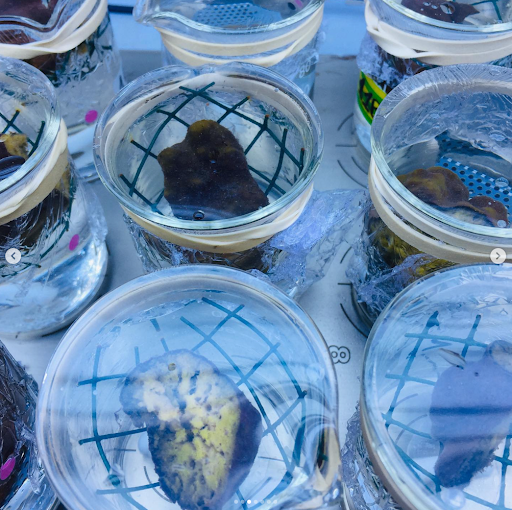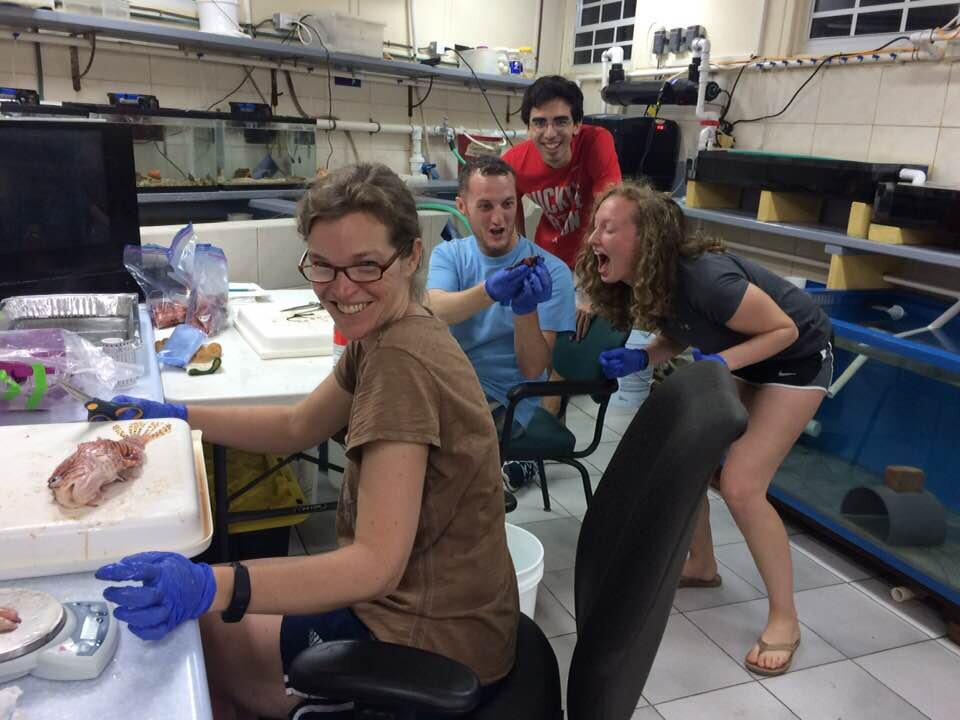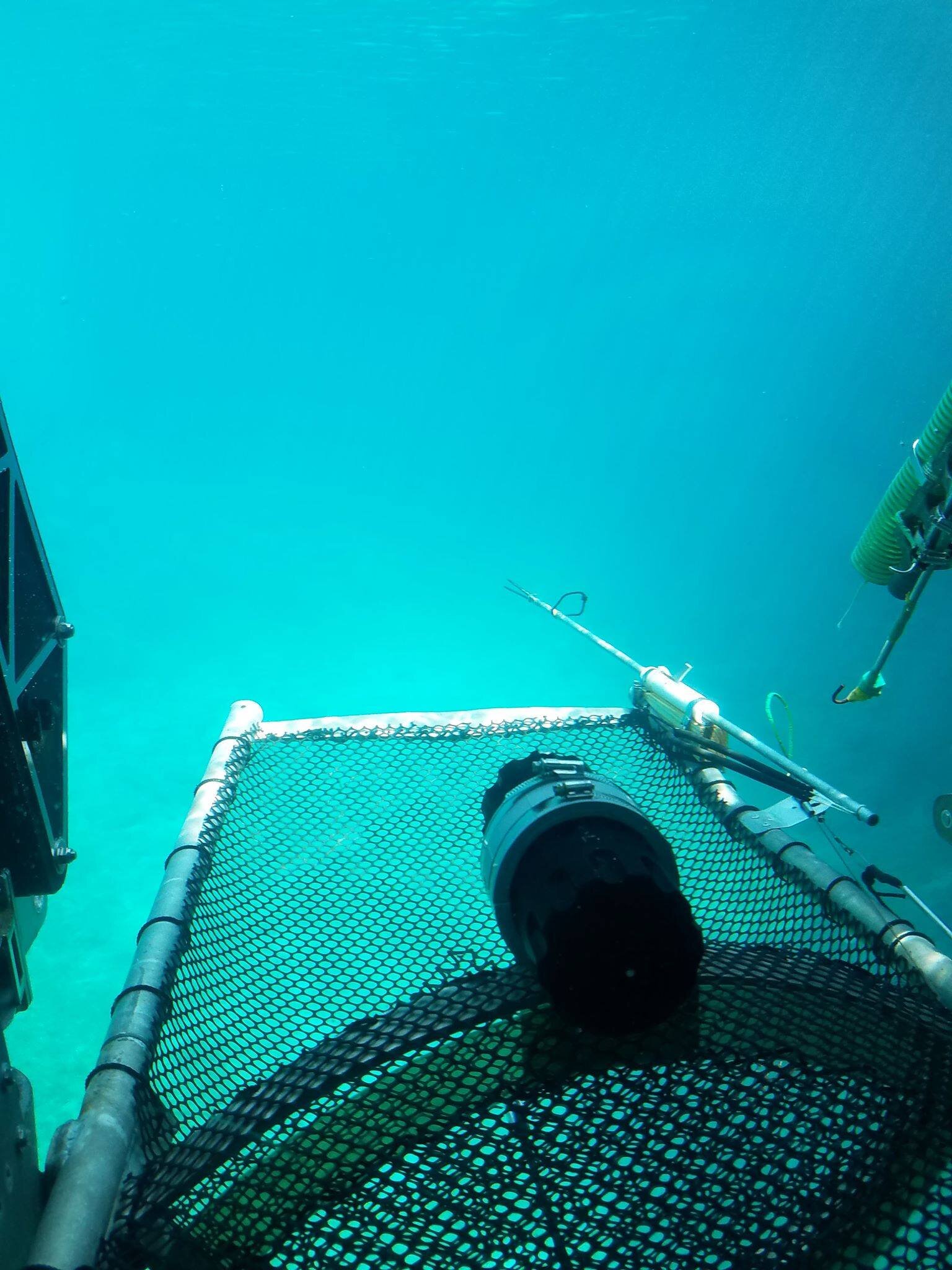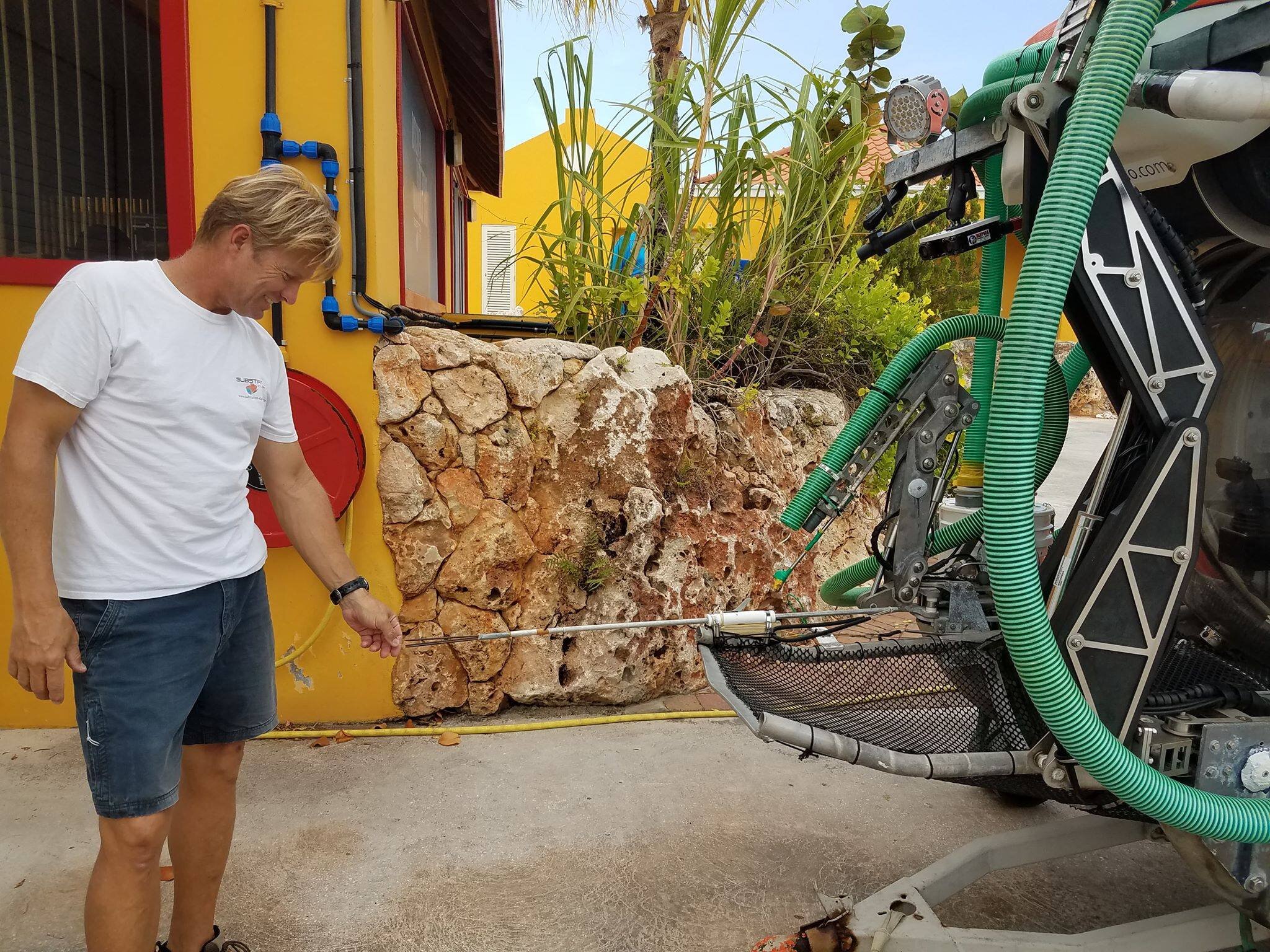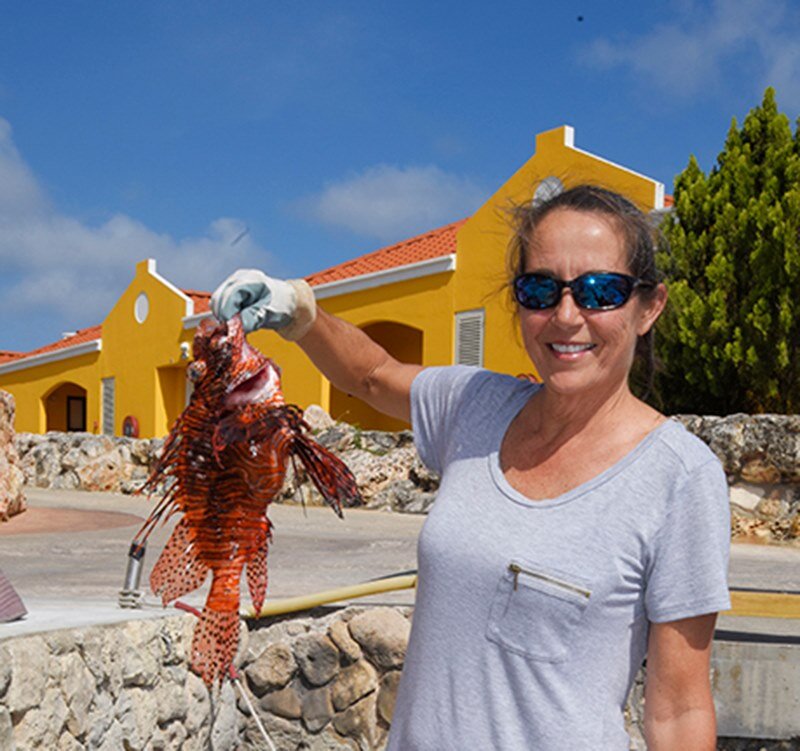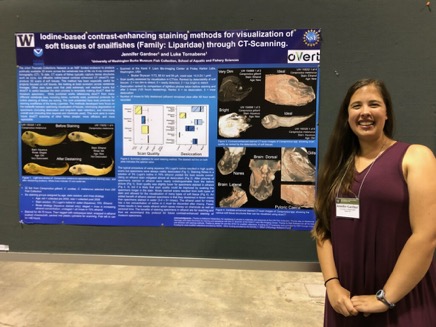Deep reef ecosystems have historically lacked the wealth of information that are available for shallow reefs, which has led to new scientific programs specifically looking to investigate biodiversity and conservation on deep reefs. The Smithsonian’s DROP (Deep Reef Observation Project) is one of these programs which has contributed to research on relationships between deep and shallow environments, focusing on biodiversity, conservation, and evolution. In 2017, UW partnered with DROP. Through this collaboration, the University of Washington pioneered a lionfish research project to learn more about the impacts of lionfish that occupied deep reef ecosystems. DROP uses submersibles that have the capability to collect lionfish occupying deep reefs, allowing us to ask whether lionfish on deep reefs occupy different trophic positions than lionfish on shallow reefs. The project was jump started when University of Washington graduate Megan Ewing was introduced to this question while working in the Burke Museum Fish Collection.
Trophic positions of deep-reef lionfish was a question that sparked the interest of undergraduate Megan Ewing in the Spring of 2020. While working in the fish collection, she was introduced to the numerous lionfish preserved in the labs deep freezer, collected by DROP using a submersible called the CURASUB in Curaçao. After several months of identifying and cataloging typically tiny specimens, Megan was excited to work with the larger creatures and answer questions related to the invasive lionfish. The basis of this question of diet and trophic positions relied on a concept called stable isotope analysis, using the two isotopes δ13C and δ15N. These elements would ultimately tell us two things: carbon isotope ratios would explain what environment the lionfish were eating, as carbon signatures found in a species can be matched to unique signatures found in specific marine habitats (deep reefs vs shallow reefs). Nitrogen isotope ratios show what trophic level an animal is eating, because nitrogen accumulates up the food chain. This background knowledge helped guide Megan’s hypotheses that deep populations of lionfish will have enriched δ15N values compared to shallow populations. This is because the increased energetic demands of more mature and larger fish found on deep reefs will lead to more prey consumption and a higher trophic position. Deep populations of lionfish will also have slightly depleted δ13C values compared to shallow populations as δ13C typically becomes depleted with depth (Fry et al. 1982, Fry et al. 1988).
The lionfish project began with 76 fish captured off reefs in Curaçao, Caribbean, 31 collected in shallow reefs, and 45 from deep reefs. Megan extracted heart, muscle, and scale tissues to examine dietary changes over short, intermediate, and long time scales respectively. Once tissue samples were organized and extracted, they needed to be prepared for bulk stable carbon and nitrogen isotope sample, a process described through (Peterson & Fry 1987), which involved grinding and weighing each 3 tissue samples of all 76 lionfish. This may sound simple, but grinding each sample of lionfish alone took three months, with time consuming obstacles like extensive sterilization, assuring the samples were consistently a baking powder consistency, and funneling these samples into tiny vials. The next step of preparation involved weighing the small bits of powder produced from grinding. “Weighing” cannot simply capture the amount of effort exerted into this process. Each sample had to weigh between .4-.425 mg, a difference that is not detectable to the human eye and comparable to the weight of an eyebrow hair. A sample this small was transported using scoops the size of a grain of rice. Once the sample was finally in the correct weight range, it was folded in its vessel in a very particular shape and placed into a capsule on a 96 well plate, among many other samples. To call this process precise would be an understatement, and is a testimony to the amount of focus and determination that science sometimes requires. Adding to the intensity of this work, a large portion of it was done in Megan’s home during a global pandemic. When everything was finally in its perfect place and measured state, the samples were sent to the UC Davis stable isotope facility to determine the δ13C and δ15N ratios.
Proceeding the lengthy scientific methods, the highly anticipated results were eventually received from the UC Davis isotope sampling lab in 2021. For all tissues, there was no significant difference in δ 13C between shallow and deep populations, but the δ 13C range of deep populations is broader than and overlapping with shallow populations. However, deep population lionfish had enriched δ 15N when compared to the shallow reef lionfish. In addition to confirming Megan’s original hypothesis, this information presented several conclusions. The increased and overlapping range of δ13C for deep populations when compared to shallow populations indicates that not only do they likely have larger habitat range when compared to shallow populations, but there could also be a vertical migration by the deep reef populations to shallow environments (Fry et al. 1982). The increased δ 15N in deep reef lionfish also indicates that they occupy a higher trophic position, as nitrogen accumulates up the food chain.
The implications of these results provide areas of concern, but also room for hope. If deep reef lionfish are indeed undergoing vertical migration, controls on these populations would be more feasible with greater management pressure exerted when these populations are feeding in shallow reefs. However, the higher trophic position of deep reef populations has major consequences for their surrounding habitats. Lionfish are invasive generalist predators, so as their trophic position increases, abundance and diversity of native prey will drastically decrease. Increased studies on deep reef populations to truly understand the implications of higher trophic level lionfish feeding will most likely proceed this work and strengthen this study. Research could be done to determine when these populations are migrating to shallow environments, to make management efforts more impactful to eradicate this population. Ultimately, there a distinction to be made between these two populations of lionfish- providing greater motivation in exterminating this invasive species when it threatens a less researched habitat in the ocean that is clearly more vulnerable to the effects of a high trophic feeding animal.



